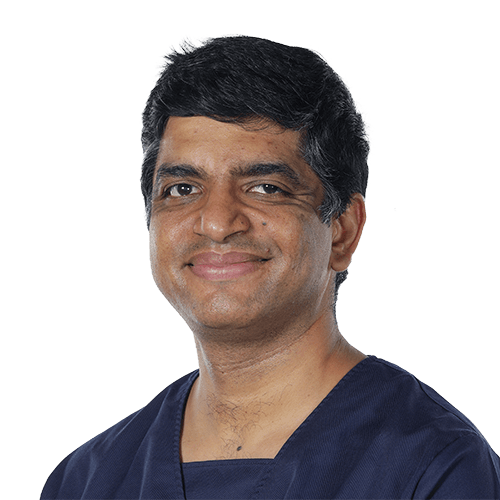
Gastroscopy
A gastroscopy is an endoscopic procedure to investigate your gullet (oesophagus), stomach and the first part of the small bowel (duodenum). It is performed to investigate upper gastrointestinal symptoms, such as heartburn, indigestion, swallowing difficulties, weight loss, abdominal discomfort and anaemia.
The procedure is performed using a gastroscope (a long, flexible endoscope) with a bright light at the end, which is passed through your mouth, down your oesophagus, into your stomach and duodenum. A gastroscopy can be performed using a local anaesthetic spray to numb the back of the throat or using sedation. During the test, tiny pieces of tissue (biopsies) may be taken to help find the cause of your symptoms. The tissue will be sent to the laboratories for analysis. The tissue is removed painlessly through the gastroscope using a tiny grasper (forceps). Gastroscopy is a quick procedure, often taking only a few minutes and is normally safe with a very low risk of complications.

Gastroscopy
A gastroscopy is an endoscopic procedure to investigate your gullet (oesophagus), stomach and the first part of the small bowel (duodenum). It is performed to investigate upper gastrointestinal symptoms, such as heartburn, indigestion, swallowing difficulties, weight loss, abdominal discomfort and anaemia.
The procedure is performed using a gastroscope (a long, flexible endoscope) with a bright light at the end, which is passed through your mouth, down your oesophagus, into your stomach and duodenum. A gastroscopy can be performed using a local anaesthetic spray to numb the back of the throat or using sedation. During the test, tiny pieces of tissue (biopsies) may be taken to help find the cause of your symptoms. The tissue will be sent to the laboratories for analysis. The tissue is removed painlessly through the gastroscope using a tiny grasper (forceps). Gastroscopy is a quick procedure, often taking only a few minutes and is normally safe with a very low risk of complications.

Colonoscopy
A colonoscopy is an endoscopic procedure to look directly at the lining of your large bowel (colon). It is performed to investigate lower gastrointestinal issues such as change in bowel habit, lower abdominal discomfort, bleeding from the back passage or passing blood in stools and screening for bowel cancer. A colonoscope is a long, flexible endoscope with a bright light at the end. It is passed into your back passage and around your colon. During the colonoscopy tiny pieces of tissue (biopsies) from the lining of your bowel may be taken to help find the cause of your symptoms and or assess the lining further. Polyps (overgrowth of tissue from the lining of the bowel) detected during colonoscopy can be removed by placing a small wire loop around the polyp and applying a small electrical charge (diathermy) to remove the polyp. Taking biopsies or removing polyps is painless.

Colonoscopy
A colonoscopy is an endoscopic procedure to look directly at the lining of your large bowel (colon). It is performed to investigate lower gastrointestinal issues such as change in bowel habit, lower abdominal discomfort, bleeding from the back passage or passing blood in stools and screening for bowel cancer. A colonoscope is a long, flexible endoscope with a bright light at the end. It is passed into your back passage and around your colon. During the colonoscopy tiny pieces of tissue (biopsies) from the lining of your bowel may be taken to help find the cause of your symptoms and or assess the lining further. Polyps (overgrowth of tissue from the lining of the bowel) detected during colonoscopy can be removed by placing a small wire loop around the polyp and applying a small electrical charge (diathermy) to remove the polyp. Taking biopsies or removing polyps is painless.

ERCP (Endoscopic Retrograde Cholangiopancreatography)
ERCP is an endoscopic procedure which is used to diagnose and treat diseases of the bile duct (the tube that drains bile from the liver to the bowel), gall bladder and pancreas. ERCP combines the use of a special telescope (endoscope) and X-rays to take pictures of the bile duct and/or pancreas, which facilitates diagnosis and treatment. The test is performed using sedation. Once you are sleepy, the endoscope is easily passed over the back of the throat, through the stomach, and into the small bowel (duodenum), where the opening of the bile duct and pancreatic duct is located. A thin plastic tube is passed through the endoscope into the bile duct or pancreatic duct and dye is injected into the duct. This enables abnormalities to be identified on X-ray screening, such as gallstones in the bile duct. If the X-rays confirm a gallstone in the bile duct, then the exit of the duct can be made bigger using an electric current (diathermy). Most gallstones can be removed at the same time. Larger stones may need specialised treatment called lithotripsy (fragmentation of stones), which can be performed during the procedure using specialised devices inserted through the endoscope. If the problem in the bile duct is due to a blockage, then a plastic or a metal tube (stent) can be placed through the blockage to allow bile to drain freely and unblock the duct. Small samples of tissue or cells from the lining of the bile duct may be taken to examine under a microscope to facilitate diagnosis.

ERCP (Endoscopic Retrograde Cholangiopancreatography)
ERCP is an endoscopic procedure which is used to diagnose and treat diseases of the bile duct (the tube that drains bile from the liver to the bowel), gall bladder and pancreas. ERCP combines the use of a special telescope (endoscope) and X-rays to take pictures of the bile duct and/or pancreas, which facilitates diagnosis and treatment. The test is performed using sedation. Once you are sleepy, the endoscope is easily passed over the back of the throat, through the stomach, and into the small bowel (duodenum), where the opening of the bile duct and pancreatic duct is located. A thin plastic tube is passed through the endoscope into the bile duct or pancreatic duct and dye is injected into the duct. This enables abnormalities to be identified on X-ray screening, such as gallstones in the bile duct. If the X-rays confirm a gallstone in the bile duct, then the exit of the duct can be made bigger using an electric current (diathermy). Most gallstones can be removed at the same time. Larger stones may need specialised treatment called lithotripsy (fragmentation of stones), which can be performed during the procedure using specialised devices inserted through the endoscope. If the problem in the bile duct is due to a blockage, then a plastic or a metal tube (stent) can be placed through the blockage to allow bile to drain freely and unblock the duct. Small samples of tissue or cells from the lining of the bile duct may be taken to examine under a microscope to facilitate diagnosis.

Cholangioscopy
A cholangioscope is a small endoscope that is inserted through the endoscope used to perform ERCP. It is a specialised procedure used to facilitate fragmentation of very large gallstones in the bile duct that cannot be removed whole or to examine the bile duct under direct vision to take samples of tissue (biopsies) when cancer is suspected.

Cholangioscopy
A cholangioscope is a small endoscope that is inserted through the endoscope used to perform ERCP. It is a specialised procedure used to facilitate fragmentation of very large gallstones in the bile duct that cannot be removed whole or to examine the bile duct under direct vision to take samples of tissue (biopsies) when cancer is suspected.

EUS (Endoscopic Ultrasound)
EUS is an endoscopic examination to look into your gullet (oesophagus), stomach and the first part of the small bowel (duodenum) under direct vision, with a view to obtaining information about the structures surrounding the oesophagus, stomach and duodenum by means of an additional ultrasound probe attached to the end of the endoscope. EUS is used primarily to investigate disorders of the bile duct and the pancreas. It can be used to undertake biopsies from the liver, bile duct and pancreas, to drain fluid collections around the pancreas which may arise following pancreatitis and to deliver a nerve block around the pancreas for pain relief in a condition called chronic pancreatitis.

EUS (Endoscopic Ultrasound)
EUS is an endoscopic examination to look into your gullet (oesophagus), stomach and the first part of the small bowel (duodenum) under direct vision, with a view to obtaining information about the structures surrounding the oesophagus, stomach and duodenum by means of an additional ultrasound probe attached to the end of the endoscope. EUS is used primarily to investigate disorders of the bile duct and the pancreas. It can be used to undertake biopsies from the liver, bile duct and pancreas, to drain fluid collections around the pancreas which may arise following pancreatitis and to deliver a nerve block around the pancreas for pain relief in a condition called chronic pancreatitis.

Stent insertion
Cancers of the oesophagus (gullet), stomach and the colon (large bowel) may cause obstruction and in some cases, the obstruction can be relieved using a stent (a short, flexible metal tube). Stents are deployed across an obstruction in the oesophagus or at the end of the stomach where it opens into the duodenum, using a gastroscope during gastroscopy. Stent insertion across cancers in the left side of the colon can be performed during colonoscopy.

Stent insertion
Cancers of the oesophagus (gullet), stomach and the colon (large bowel) may cause obstruction and in some cases, the obstruction can be relieved using a stent (a short, flexible metal tube). Stents are deployed across an obstruction in the oesophagus or at the end of the stomach where it opens into the duodenum, using a gastroscope during gastroscopy. Stent insertion across cancers in the left side of the colon can be performed during colonoscopy.
